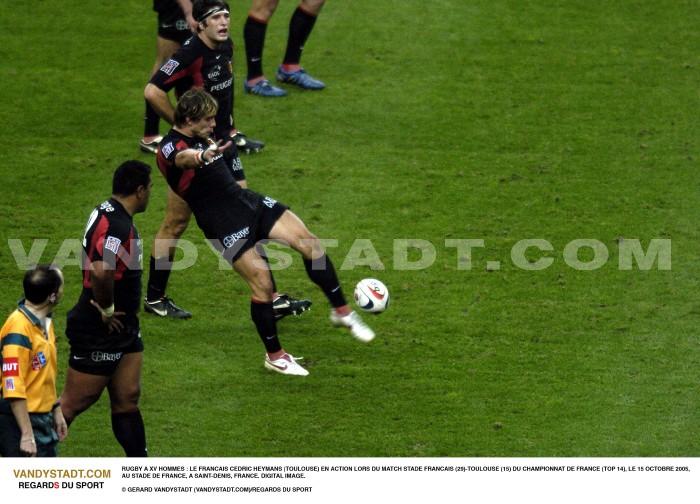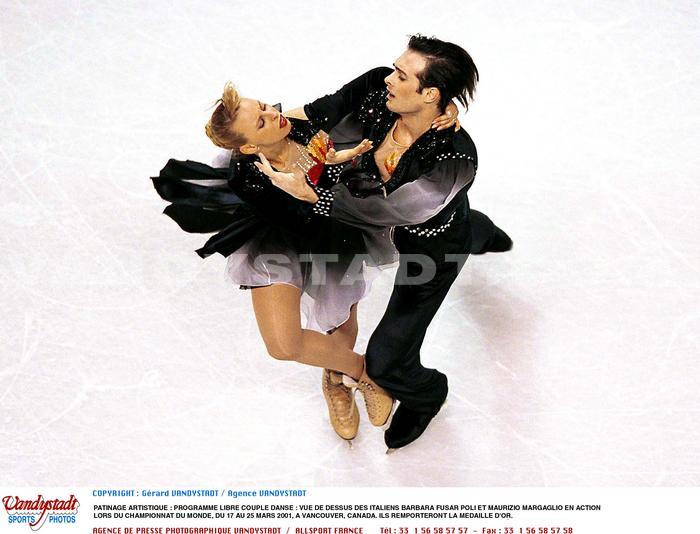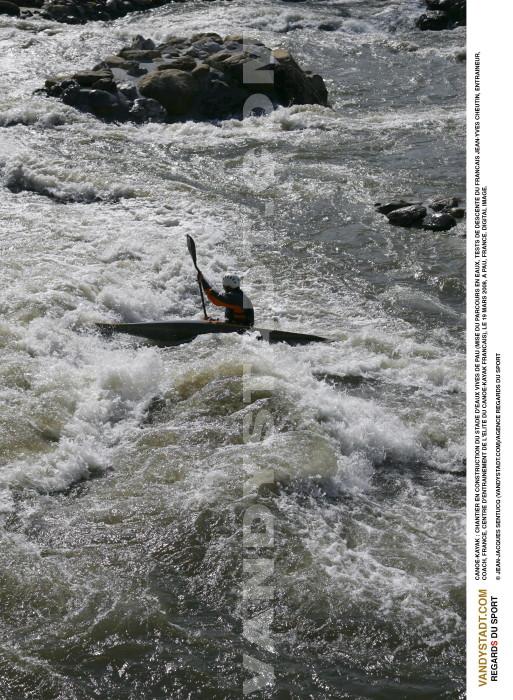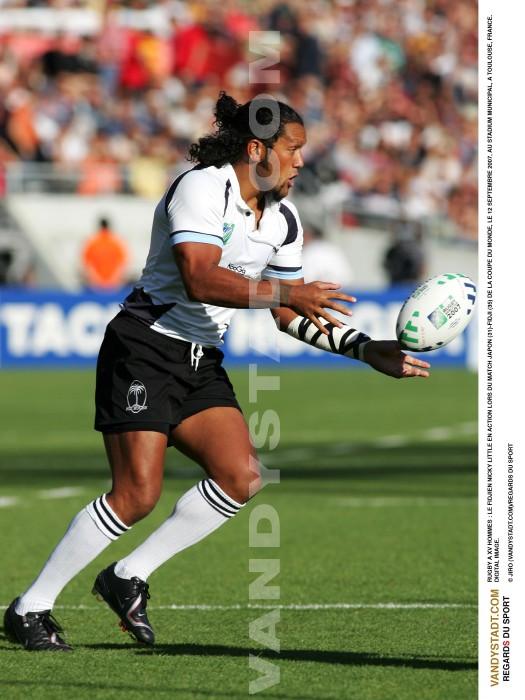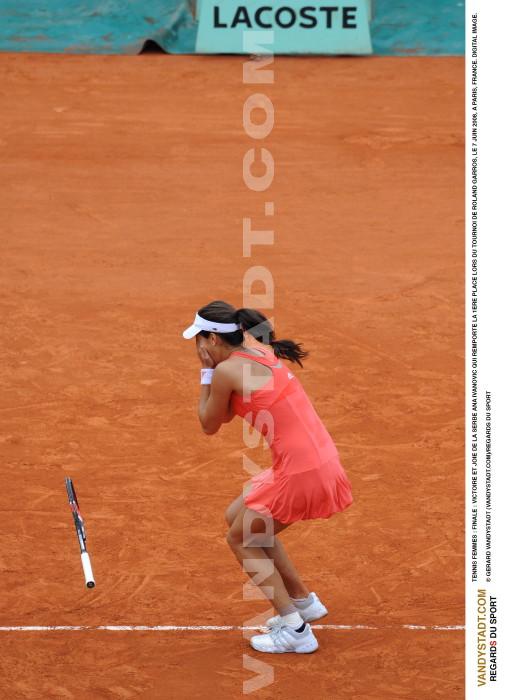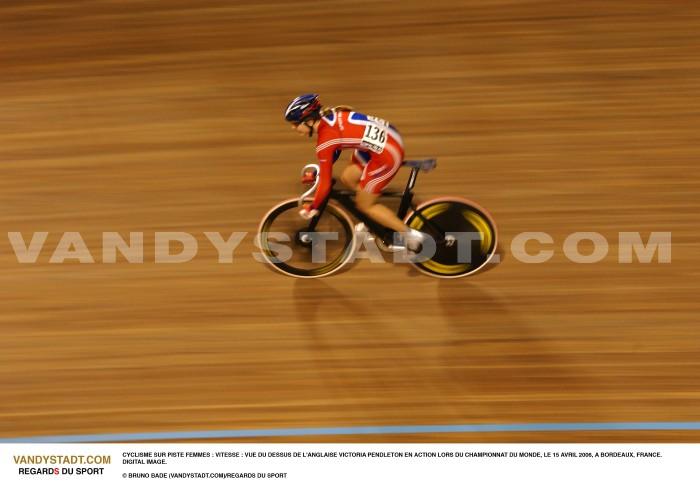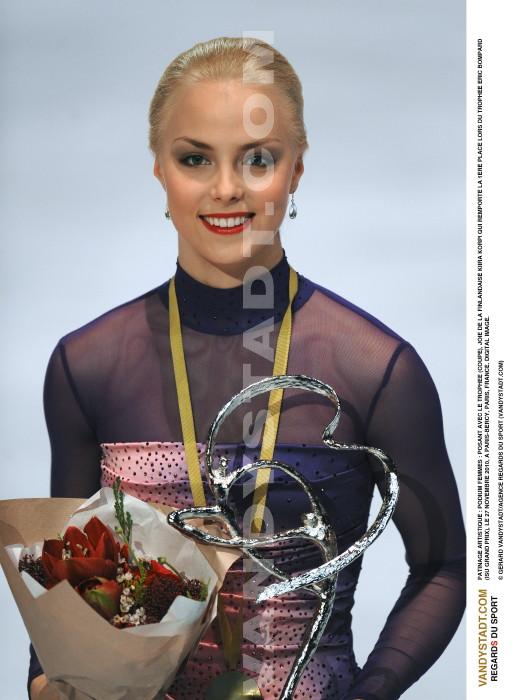Water-Polo - Water Polo history
Water Polo - Olympic Sports
![]()
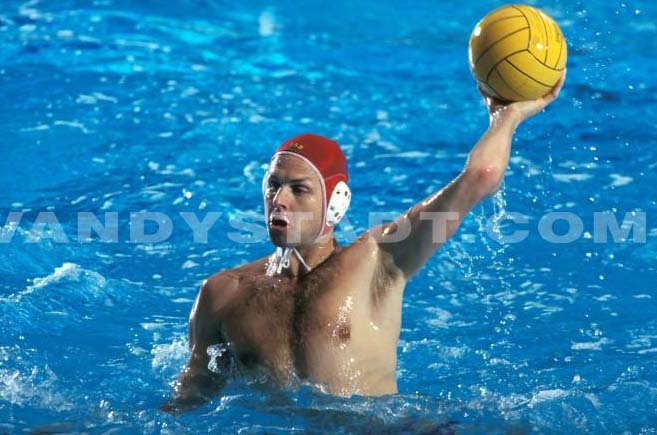
History
Players, straddling barrels richly decorated, used paddles to move and play the ball. It was the "water derby" and the resemblance between this game and the polo horse is likely to come down to us the term "water polo".
History
In the mid-nineteenth century, the desire to make it more attractive swimming competitions has led organizers to seek forms most played
straps.
The water polo has evolved differently in Europe and the United States. His name softball water polo played with an empty bag. It was a violent sport causing fights between the teams. In 1897, the New York Harold Reeder wrote the first rules to reduce violence in the game
Around 1840, at the instigation of the London Swimming Association "game ball in the water, a kind of water derby, the true water attractions, was born in England. In 1879, the number of players was increased from three to nine for each course. The first ball was a mere rubber bladder of football. At the beginning of the game the ball was thrown by the referee at the center of the game and the players placed on the flat boats at each end of the field of play, then threw themselves into the water and swam to the ball. He was then going to wear on the opposing ship, guarded by a player who can defend his goal from outside or even jumping into the water.
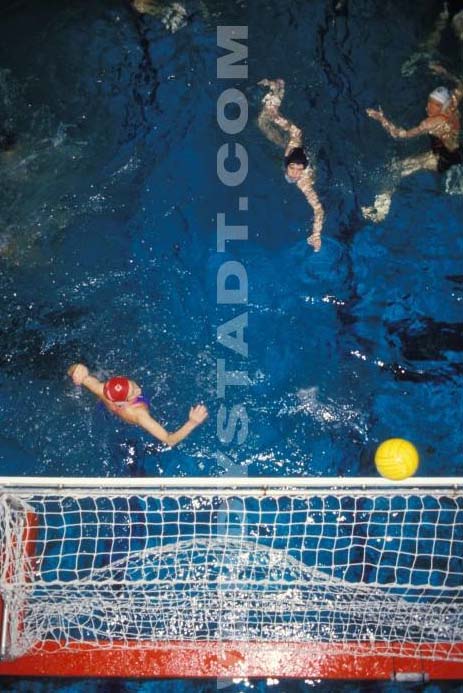
Some dates
In 1880, the game takes the name "handball Aquatic" and little by little boats were replaced by goal posts, the ball can then be worn or thrown inside.
In 1883, playing time is limited to 20 minutes. In 1885, the number of players is set to 8 teams maximum. Cups of distinct colors required. Width of the goals set at 10 feet, about 3.30 m. Balloon diameter greater than 8 inches, 25 cm. The player leaving the water no longer allowed to participate. The ball may be moved under the water.
Other key dates
1886: 7 players on each side. We can no longer play with their feet to the bottom (except goalkeeper), or play the ball with more than one hand at a time. The goalkeeper can not reach beyond the middle.
1888: the dimension of goals is determined approximately as the rules now and then consider the case of basins where the depth is greater than 1 meter, and the size of the pool limited to 30 yards on 20 yards.
1895: emergence of water polo in France as an attraction at the circus.
1908 on the initiative of the Englishman George Hearn, creation of the Federation Internationale de Natation (FINA now) and the general rules of the game of water polo was standardized.
1920: Creation of the French Federation of Swimming.
1950: Players are allowed to move at all times even if the referee whistles (before they had to stop any movement at each whistle). This led in 1960 to
ize the duration of the game in 4 periods of 5 minutes (instead of 2 times 10 ') and to allow replacement players to participate.
Water polo and Olympism
Played at the 1900 Games in Paris, water polo is on the Olympic program since 1908. The main researchers are Hungarians who harvested their eighth Olympic title in 2004.
Women's water polo teams from 8 began in Sydney in 2000 after being a demonstration sport in 1984 ..
Competition
Two teams of 7 players, one goalie, compete on a lake with a length ranging from 20 to 30 meters, a width of 10 to 20 meters and a depth greater than 2m. Players try to score as many goals as possible to the opposing team.
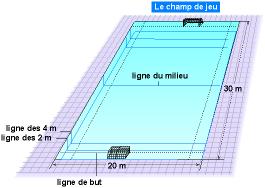
For the women's water polo, the length of the pool is 25 meters and width is 17 meters.
The balloon weighs 400 g and 450 g. Circumference: between 0.68 m and 0.71 m for men and between 0.65 m and 0.67 m for women. Caps
The players of water polo wear bathing caps in color, indicating the number of each player and includes protections for the ears (shells). They serve to protect and prevent ear infections to the number of blows in the water at ear level. The goalkeeper must wear the cap 1 and the other caps shall be numbered 2 to 13.
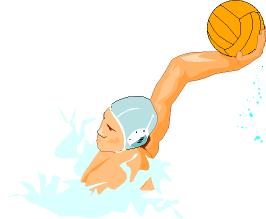
The length of matches is 4 times eight minutes of actual game is about 4 x fifteen minutes. Teams change ends before starting a new period. There is an interval of two minutes between each "quarter time". The time is counted from the starting signal of the referee. At every stop signals, the clock should be stopped until play resumes.
Each team has thirty seconds to each attack, about fifteen seconds to 'back' field and fifteen seconds to run the ball and shoot.
Do you know a player's water polo can cover up to 5 km during the swimming competition?
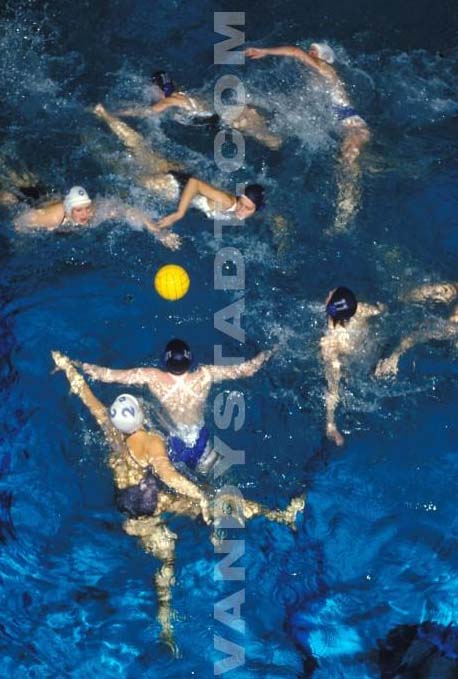

A goal may be scored from any part of the body except the clenched fist, provided that the ball has been played by two players or more after the start or resumption of play the team to which they owned or part of the playing field where the goal has been scored are unimportant. Play the ball means the handle with the palm of the hand.
Any attempt by the goalkeeper to stop the ball before it has been played this way is not regarded as "play" and if the ball crosses the goal line or hit the goalposts or the goalkeeper A throw-in is given to the latter.
It is allowed to dribble the ball through the goal posts.
A game of water polo involves about 80 attacks defenses!
CornerThe arbitrator must immediately report by a whistle as the ball crossed the goal line.
When the ball completely crosses the goal line, outside the area between the goal posts, having last been touched by a player defending the camp, a corner is awarded to the opponent nearest line two feet, the side where the ball is out of the game corner is played to mark the line of two meters.
When a corner is played, no player (except the goalkeeper defender) can be found in the area of two meters.
KicksThe referee pointed out the errors by a whistle and raises the flag color of caps of the team receiving the free kick.
A free kick awarded for a foul committed in the ordinary area of both feet must be played on the line two feet nearest point where the offense was committed, except in this case, the kicks must be played of where the offense was committed.
The kick must be played so that other players can see the ball leaving the player's hand. It is allowed to dribble the ball before passing to another player.
In all cases free kick, corner or throw-in by the referee at least two players (not counting the goalkeeper defender) should play or touch the ball before a goal can be scored.
There are two types of kicks.
- Simple: possible shooting beyond 5 m from the goal.
- Serious fault: the offending player is released 20 seconds which gives a numerical superiority equivalent to 50% success further. After three serious mistakes, the player is ejected (after twenty seconds of inferiority is another player who returns to his place.
Serious Fault
Are considered serious faults:
1. Hold, push, pull themselves back to an opponent who does not have the ball.
2. Give kicking an opponent or knocking or making disproportionate movements with that intention.
3. Committing any fault in the area of four meters, by which a goal was likely avoided.
Personal FoulsA player committing a serious offense anywhere in the field of play should be credited with a personal foul. A recording of the third personal foul in a game, it should be excluded for the remainder of the match and a replacement can come from his own goal line to the point closest to the goal judge, after the expiration of 45 seconds of actual game or after a goal has been scored if it occurs before the expiration of 45 seconds. If the third personal foul is the result of an offense involving the awarding of a penalty, the entry of replacement must be immediate and intervene before the start of the penalty.
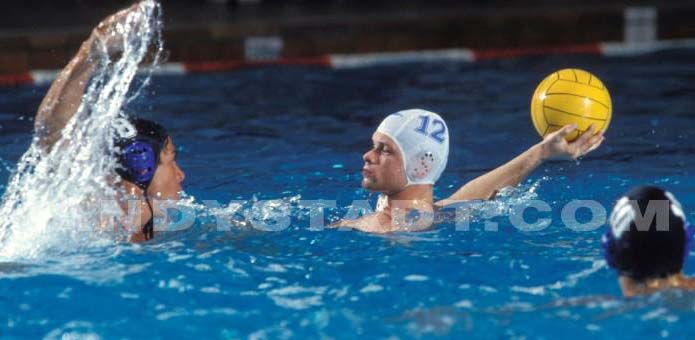
Penalty
When a penalty is awarded for gross negligence in the area of 4 m, the offender shall be ordered to leave the water only if the misconduct is so serious as to justify the exclusion for the remainder of the match.
A penalty may be executed by any player on the team to which he has been granted, except the goalkeeper. The player taking the stroke may choose to do so anywhere in the line of four feet of his opponents.
The player taking the stroke must await the signal for the referee to be given by a whistle and simultaneously lowering the flags in a vertical position to a horizontal position. The player must be in possession of the ball and immediately launch an uninterrupted movement directly towards the goal. If the ball bounces off the goal posts or crossbar, he remains involved and it is not necessary that the ball is played by another player before a goal can be scored.
The goalkeeper should take a position anywhere on the goal line and the referee should suspend its signal to start until he is satisfied on this point.
OffsideIf a player sends the ball out of the playing field on one side or the other, a free kick is awarded to the player from the opposing team closest to where the ball left the playing field, and the kick should be executed there.
Release of waterA player must not leave the water or sit or stand on the steps or the edge of the basin during a game, except:
- During an interval x,
- In case of illness or accident,
- Leave of the arbitrator.
When a player gets a cramp, he must leave the water as quickly as possible and the match should continue once the player is out of the water. No replacement is allowed.
ExtensionsIf a meeting requires a final result ends in a draw at the end of regulation time, there are extended after a rest of five minutes. It must then be played in two periods of three minutes of actual game each, with an interval of one minute to change sides.
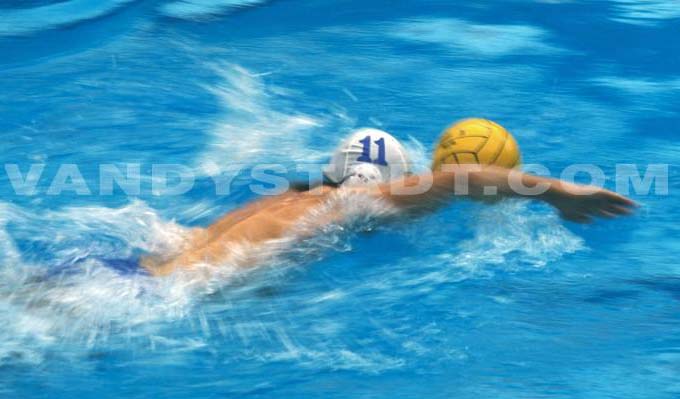
Copyright Sportquick/Promedi








